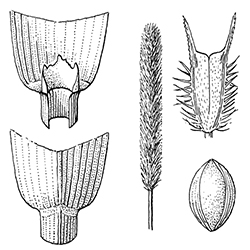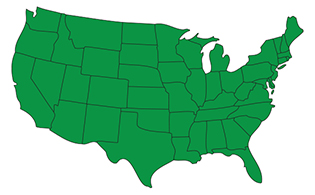

Timothy
Phleum pratense
Timothy is a perennial grass that can also be considered a lawn weed in low-maintenance turf areas. This part-time grassy weed is also known as Herd's Grass or by its scientific name, Phleum pratense.
Identify

Rhizomes

Stolons

Membranous

Rolled
Timothy can be identified as a coarse, bluish-green, clump-forming perennial grass—or grassy weed. Its ligule is medium to long and toothed at the corners and apex. The stems are whitish in color and swollen at the base, lacking hairs. Timothy features smooth sheaths that are not compressed and a fibrous root system growing from short rhizomes and occasionally short stolons. Timothy can be distinguished from most other grasses in that one or occasionally more of the basal internodes of the stem swell into a bulb-like growth near the surface. Timothy is often cultivated for hay and grazing purposes, hence the nickname Herd's Grass.
Life Cycle
Either as planted grass or as lawn weeds, Timothy prefers rich, moist soils and clay loams and can be found growing throughout much of North America. These perennial grasses can germinate and spread from seeds, but they also produce a root structure (tubers, bulbs or corms) that can birth new weeds from your lawn's surface (using stolons) or from underground (using rhizomes). Perennial grassy weeds live two or more years and have a deeper root structure that can give rise to new weeds—even if you no longer see the weeds in your lawn.

Control
Good cultural practices—such as hand-pulling lawn weeds and proper watering and mowing routines—can assist with the control of Timothy. This is due to the plant's inability to tolerate low-mowing heights. In certain parts of the country, selective systemic weed control programs may be an option, but for effective weed removal, professionally selected and applied weed control treatments are your best bet for eradication.




Facebook
X
Youtube
Copy Link
Email